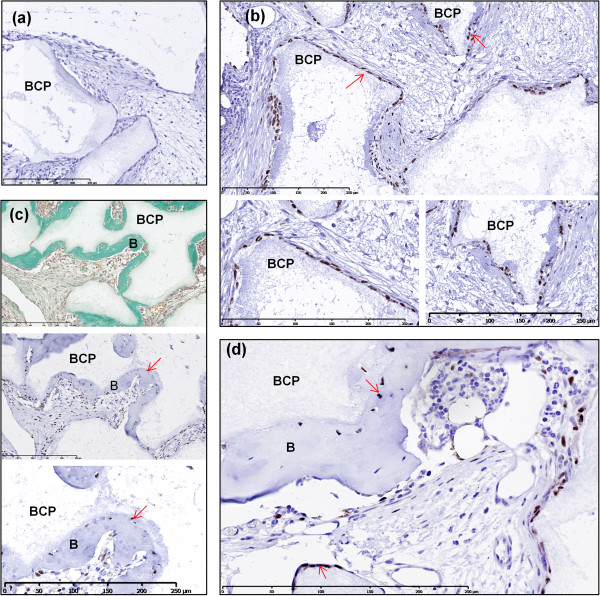Figure 7.

In situ hybridization using the human-specific repetitive Alu sequence for identification of human cells. All samples were analyzed after 8 weeks of subcutaneous implantation in nude mice (a) Negative control. (b) Although explants were composed primarily of mouse cells (purple nuclei), human cells (brown/black) were identified attached along the periphery of biphasic calcium phosphate (BCP) particles (red arrows). These regions of interest are shown in magnified view. (c) Masson trichrome staining of explants with a serial section showing human cells present (red arrow), with a magnified view also presented. (d) Explant showing mice cells (purple nuclei) and human cells (brown/black nuclei) embedded in osteocyte lacunae and surrounding BCP particles (red arrows). Scale bars: 250 μm. B, bone formation.
